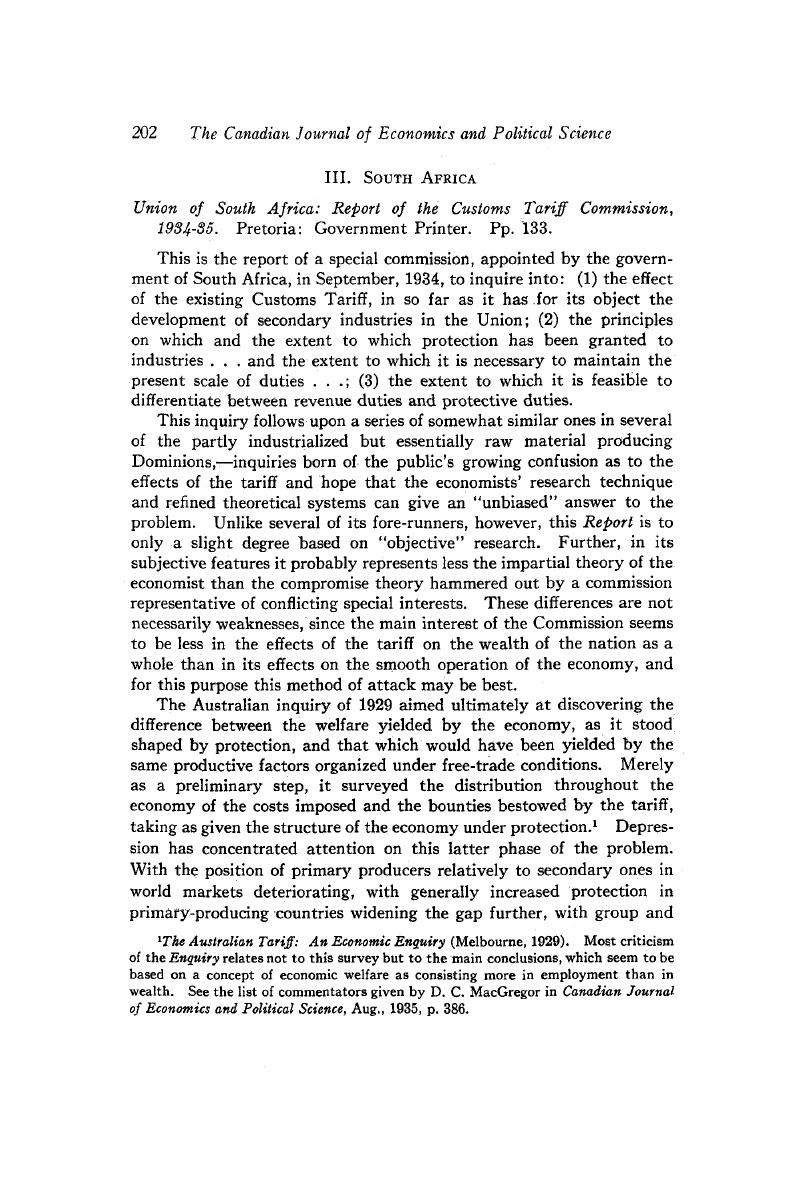No CrossRef data available.
Published online by Cambridge University Press: 07 November 2014

1 The Australian Tariff: An Economic Enquiry (Melbourne, 1929).Google Scholar Most criticism of the Enquiry relates not to this survey but to the main conclusions, which seem to be based on a concept of economic welfare as consisting more in employment than in wealth. See the list of commentators given by MacGregor, D. C. in Canadian Journal of Economics and Political Science, 08, 1935, p. 386.Google Scholar
2 A Submission on Dominion-Provincial Relations and the Fiscal Disabilities of Nova Scotia within the Canadian Federation presented by Rogers, N. McL. (Halifax, 1934), ch. viii.Google Scholar Not only is this brief subject to criticism for its statistics (see D. C. MacGregor, op. cit.), but the values it attempted to measure have little meaning as the basis of a claim for redress. For one thing, some part of the bounty to protected producers merely compensates them for the reduction of their productivity caused by their engaging in the bonussed activities rather than in their alternative activities under free-trade conditions. Further, there should be some estimate of the distribution of the indirect and immaterial benefits presumably achieved. Even such calculation does not tell the whole story. Balance of burdens and benefits among regions or economic groups is not necessarily prescribed by the canons of public finance. It may well accord with popular will that one economic class or region should bear, uncompensated, most of the burdens of such a policy as protection, if most of one of the economic surpluses of the economy is concentrated in such region or class.
3 The commissioners were Dr. J. E. Holloway, financial adviser to the Treasury; Professor C. S. Richards, University of Witwatersrand; J. D. Heddon, commissioner of customs; H. J. Laite, secretary of Associated Chambers of Commerce, and four others.
4 However, if the first possibility mentioned in the second preceding paragraph were exactly true, the figure for “excess costs” would better reflect the economic loss to the nation, due to protection, than would an accurate figure of the amount contributed by other economic classes to protected producers.
5 Possibly, in view of changed conditions of world demand for primary products, the best opportunities available to such factors under freedom of trade would be little different from those in which they are now engaged. It is interesting, in the case of Canada, to think of a similar possibility, especially in view of the probable continuance of barriers to Canadian entry to the United States.